The Rusted Look
Rust on a prop or costume can really enhance the feeling that the item has been around for a while. If you look at rust in general. It's either an orange or reddish color, this is caused by the oxidation of the metal. Bronze will oxidize green in color, so keep that in mind when distressing a bronze looking item. Red primer paint is a good cheap base paint for rust coloring. I recommend diluting it and brushing this as a 'wash' at key points. Observing how rust works and flows in the real world is highly recommended. It's kind of hard to tell someone how rust looks, you just have to observe it yourself.
Carl Cascone wrote a great article in the July, 1996 NMRA Bulletin about rust detailing on model Railroads (look around the net for this article if you have time). He observed that there are basically 4 kinds of rust: light, heavy, old and new.
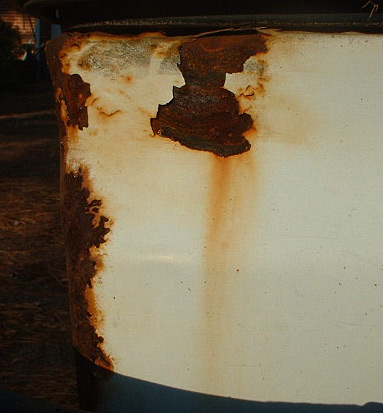
Light Rust is basically a slight orange patina color, coming from exposed raw metal like rivets and seams. This just covers the paint job slightly, never fully obscuring the paint, and gradually diminishing the further it gets from the rust source. Light Rust coincides with New Rust, and Carl recommended using the Floquil paint color 'Rust' for this types of rust. Another recommended product is Pelikan Ink: No. 15 Sepia. It is a brown / black color that is perfect for oil stains, rust and giving that aged or weathered look.
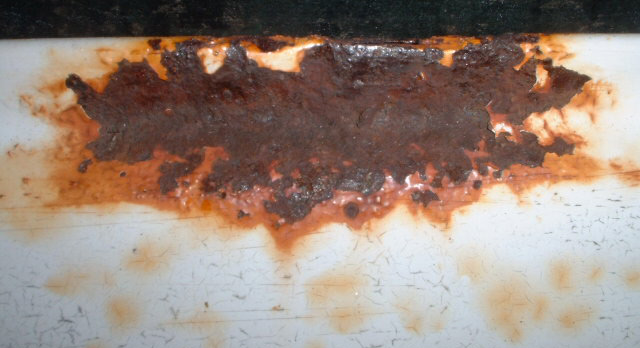
Heavy Rust and Old Rust go hand in hand at times. This is usually a darker reddish Brown and pits the metal considerably, sometimes causing the paint to bubble up and flake off even. Sometimes adding a 'Grimy Black' color to the base rust color works well to darken the rust and add a level of age to its look.
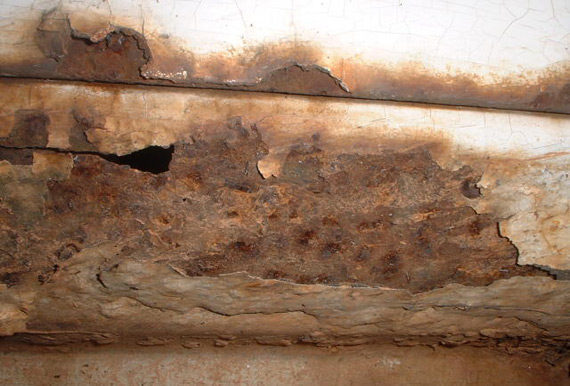
Old Rust is usually very heavily pitted and or layered. notice in the picture here that the metal has been eaten away in layers. Also notice how the paint "bubbles up" as the metal below it is eaten away by the corrosion effect. Mastering this technique can take weeks. Alot of hobbyists use smeared vaseline or putty under their paint to achieve the bubbled look. They 'break up' the bubbles when the paint is fully dried a couple days later.
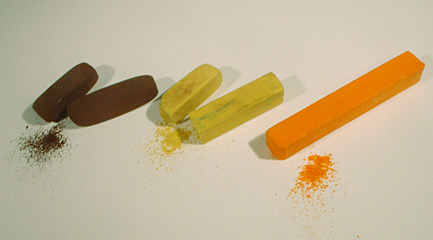
Chalks are also good for simulating the rust effect witha texture, but you need to seal the chalk to the costume/prop before you attempt to use it. Unlike model railroads that get little wear and tear, props and costumes will be handled a lot, and you need to safe guard your detail work from this handling.
I used a sharp blade to scrape the chalk powder off the sticks.
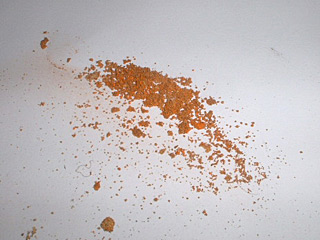
Here you can see how the rust color is achieved by mixing muliplte colored chalks together.
©2010 Studio Creations - All Rights Reserved
